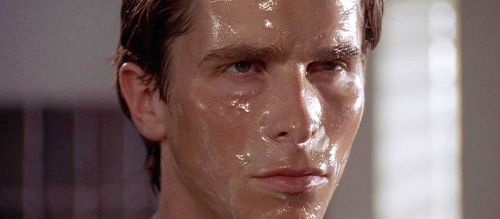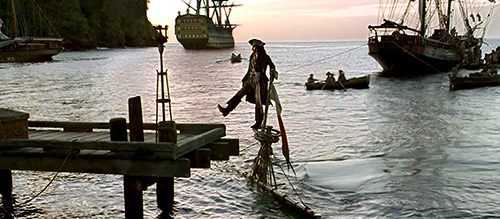5 of the Best Character Introductions in Movie History
This article was written exclusively for The Film Magazine by Ioanna Micha.
We always think we are great judges of character. The truth is, however, that more often than not all of us have been deceived by a shiny exterior. As we go about our everyday lives, we witness the existence of many people. Some of them have a constant presence in our peripheral vision, while others are fleeting glimpses of a hand, a hair flip, or a smile.
We evaluate people by the way they carry themselves; their tone of voice, their attitude and their clothes. Programmed as we are, we have to assess our surroundings to experience life, or in extreme cases, determine whether there is a possibility of immediate danger.
Considering that we go through the same process when we meet fictional characters, filmmakers had to discover a way of introducing their protagonists and antagonists to compel their audiences to keep watching. After all, that first impression is the basis of a viewer’s position toward a character, and possibly toward the film itself. Of course, finding a character’s introduction intriguing doesn’t equate that one will empathize with the character; it will only lead to the viewer wanting more.
There is a magnitude of different ways in which a character can be introduced to a spectator in order to establish a link between the two.
In this list, we’ll take a look at 5 of the very best examples of this for 5 of the Best Character Introductions in Movie History.
1. Patrick Bateman
American Psycho (2000)
Early on in the 21st century, Patrick Bateman, played excellently by Christian Bale, waltzed onto our screens and threw our intuition off in every way possible through a masterfully crafted introduction.
We meet Bateman as he is having dinner with his colleagues at a posh restaurant. Significantly, while we have been accustomed to recognize a protagonist due to his/her distinctiveness in relation to his/her immediate environment, that’s not the case with Bateman; early on he’s at one with the mass. The film’s opening scene is making a statement about collective identity and how it has distorted this group of men’s sense of self. After all, Bateman’s need to “fit in”, as he says, is the cornerstone of his life, because underneath that cool and collected exterior lies a coldblooded serial killer.
It is only after a female bartender is slightly rude to him that Bateman’s psychopathic predispositions come abruptly to the surface. He goes from reacting with a charming smile, to very graphic descriptions of violence in a split second, and that’s when we truly meet Patrick Bateman. Then, as if it isn’t clear at this point, in comes the morning routine sequence which brings to the fore the next important aspect of the character: his fixation with his image. It’s here that we see the real Bateman; his obsessive exercising, and the monologue about the exhaustingly time-consuming system he follows to maintain an illusory image of perfection, point back to his narcissism. It’s all perfectly summed up in Bateman’s words: “there is an idea of a Patrick Bateman. Some kind of abstraction. But there is no real me, only an entity; something illusory. And though I can hide my cold gaze and you can shake my hand and feel my flesh gripping yours, and maybe you can sense our lifestyles are probably comfortable, I simply am not there.”
Significantly, this performance of success and tranquility that Bateman has developed over the years has granted him the reputation of normalcy; he is “the voice of reason. The boy next door”. The irony of these labels works on two levels here: firstly, it’s clear that Bateman isn’t “the voice of reason” and secondly if Bateman is the sane one, we are forced to question the very nature of sanity or, better yet, how capitalism has redefined sanity to begin with.
2. Captain Jack Sparrow
The Pirates of the Caribbean: The Curse of the Black Pearl (2003)
Prior to the 2016 scandals, Johnny Depp, known to this day for his numerous portrayals of an Outcast character, landed the role of Captain Jack Sparrow in Gore Verbinski’s The Pirates of the Caribbean: The Curse of the Black Pearl (2003). We saw before how a character can be introduced through a use of a diction, but now we move on to how a character can be constructed through his reactions to external stimuli non-verbally.
Sparrow’s first scene begins with him on a ship; a ship that will inevitably sink. Being fully aware that the ship cannot be saved, Sparrow goes to a best case scenario mode and is determined to keep it afloat for the remaining time he needs to reach the dock. There’s no panic or despair; he trusts himself to utilize the means he has at hand to succeed. And so he does. Sparrow finds land moments before his ship gives in to the waves with an expression of a grandiose confidence that we’ve become accustomed to by now.
Notably, amidst this chaos, he sees the corpses of three hanged pirates and salutes; it’s evident, therefore, that Sparrow has a code of honor even if it’s not a conventional one. Of course, it’s not only that he pays tribute; it’s also the way in which he does that sheds more light to who he is. Sparrow, most probably because he’s played by Depp, is sort of a caricature. We see a playful attitude in everything he does, even if that entails showing respect to the dead.
Overall, Sparrow might be the “worst pirate [one] has heard of”, as James Norrigton (Jack Davenport) once said, but he has a purpose, and that purpose is regaining his stolen ship The Black Pearl. Even if we don’t know that from the very beginning, we instantly understand that nothing will stand in the way of him achieving his goals, and that’s the essence of the character’s most visual introduction.



